Mark Cavendish's unique guide to Milan-San Remo: 'Easiest race to finish but hardest to win'
"It builds like an opera, faster and faster, more tense and more tense": 2009 winner Mark Cavendish guides you through Milan-San Remo
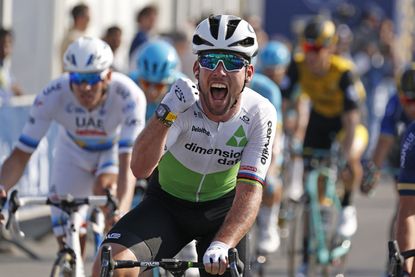
Mark Cavendish wins stage three of the 2018 Dubai Tour

Mark Cavendish explained that Milan-San Remo may be 'easy' to finish, but that every one of the 291 kilometres in Saturday’s race are complicated.
Milan-San Remo winner in 2009, Cavendish talked to Cycling Weekly prior to the 2015 event to give his opinion on the race's different phases, from Lombardia to Liguria, and to give you a unique insight into Italy's classic.
"It's the easiest race to finish, but the hardest to win," Cavendish said.
Cavendish shot like a missile from the peloton to catch and pass Heinrich Haussler for his win. In the subsequent years, he has been unable to repeat that success for various reasons.
Followers may look at the final finishing straight, on San Remo's high street, Via Roma, to review the race, but they should instead cast their eyes on the entire parcours.
Only looking at the road south from Milan and along the Ligurian coast, can you start to understand the mystery behind what Italians refer to as La Classica di Primavera.
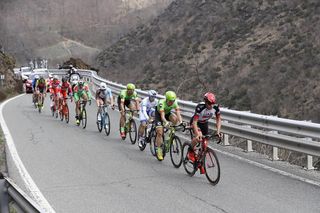
The classic will roll as always from Castello Sforzesco on Saturday (March 17) morning and continue through the flat Po Valley that is famous for producing Italy's rice. The only major bump on the race profile is the Turchino Pass, which takes the riders into Liguria and leaves another 160 kilometres to the possible sprint finish in San Remo.
Get The Leadout Newsletter
The latest race content, interviews, features, reviews and expert buying guides, direct to your inbox!
"The first sprint comes through the first feed zone before the Turchino. We are not sprinting for position on the climb, but before the tunnel at the top and the descent," Cavendish explained.
"I remember in 2010, I had a broken spoke at the bottom before the climb, I had to change my front wheel, fight for position and chase on Turchino to get back. In the tunnel, the lights were out and there was a crash, and I stopped dead with riders just hanging out in the tunnel!

"On the descent, it doesn't really break up, not enough to split the race unless like that day, there's a massive crash. If you are not in good position, you can lose energy. If you are behind, it's enough to take your energy that you need for the final."
The Turchino Pass opens up to the coast and generally better weather and stronger winds. After a rapid descent to Voltri near Genoa, the race turns right and travels west along the coast. The road rises three times over the Tre Capi – Mele, Cervo and Berta – and turns inland off the Via Aurelia twice for the climbs to the hilltop towns Cipressa and Poggio.
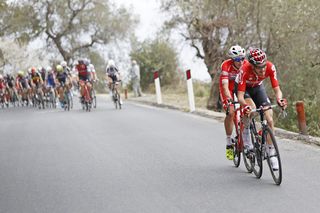
"It builds like an opera, faster and faster, more tense and more tense," Cavendish continued. "Finally you hit the Capi, there's going to be one or two guys that go, then a few more on Berta."
The short Berta climb leaves only 10 kilometres to the foot of the 5.65-kilometre climb to Cipressa at 239 metres. The Poggio, shorter at 3.7 kilometres, but more intense, comes 10 kilometres later. After the tricky descent past the deteriorating greenhouses, only 2.3 kilometres remain to the finish line.
"There are a lot more attacks on the Cipressa. The big spectacle is on the Poggio, not most of the way up, but at the top, in the last K."
>>> Milan-San Remo 2018: Preview and everything you need to know
The teams with attackers like Greg Van Avermaet (BMC Racing) and Michal Kwiatkowski (Team Sky) will try to wear down fast finishers like Alexander Kristoff (UAE Team Emirates), Elia Viviani (Quick-Step Floors) and Arnaud Démare (Groupama-FDJ) on the seaside, especially on the final two climbs, to avoid a sprint.
"There's no secret to winning San Remo, you just have to get everything right for 300 kilometres," said Cavendish. "I just break it down into chunks, it's probably the easiest way to count down the kilometres."
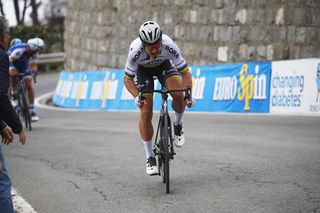
The forecast for 2018's race is for wet weather but still better than 2013, when snow forced the organiser to bus the riders around the Turchino. Clear skies and low wind speeds could help keep the race together – but Cavendish says that rain plays little part in the race.
"Rain's irrelevant, it's the same for everybody who lines up. We all have to deal with it. It's not like it's raining only on one person and dry on the others," said the sprinter from the Isle of Man.
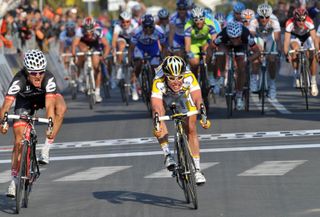
Cavendish explained why he has not yet been able to repeat his 2009 success.
"It's not easy to win San Remo, that's the simplest answer," he said.
"There's a handful of guys probably with a chance of winning, but more than a handful who believe that they have a shot of winning, which is different to any other race."
Cavendish has said that he will ride the 2018 race in support of his team after crashing out of Tirreno-Adriatico last week on the opening stage and fracturing a rib.
He said a few days before the start: "After crashing in Tirreno I’m obviously not in any sort of condition to win Milan-San Remo but having been able to train enough through the pain over the last few days I feel like I can go in support of my teammates."

Thank you for reading 20 articles this month* Join now for unlimited access
Enjoy your first month for just £1 / $1 / €1
*Read 5 free articles per month without a subscription

Join now for unlimited access
Try first month for just £1 / $1 / €1
Gregor Brown is an experienced cycling journalist, based in Florence, Italy. He has covered races all over the world for over a decade - following the Giro, Tour de France, and every major race since 2006. His love of cycling began with freestyle and BMX, before the 1998 Tour de France led him to a deep appreciation of the road racing season.
-
 Demi Vollering seals Vuelta Femenina overall with solo victory on stage eight
Demi Vollering seals Vuelta Femenina overall with solo victory on stage eightSD Worx-Protime rider wins eight-day race by almost two minutes
By Tom Davidson Published
-
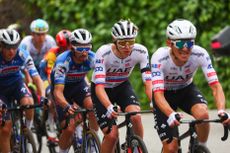 Giro d'Italia stage 2 live: Will Tadej Pogačar take the pink jersey?
Giro d'Italia stage 2 live: Will Tadej Pogačar take the pink jersey?A GC battle is expected on the second day of the Giro, with the race's first summit finish
By Tom Davidson Last updated
-
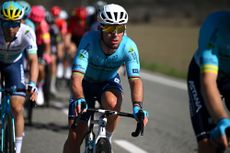 Mark Cavendish to miss Scheldeprijs as illness continues to affect schedule
Mark Cavendish to miss Scheldeprijs as illness continues to affect scheduleCavendish will ride Presidential Cycling Tour of Türkiye later this month, Astana Qazaqstan confirms
By Tom Thewlis Published
-
 Mathieu van der Poel not intimidated by Tadej Pogačar’s form ahead of Milan-San Remo clash
Mathieu van der Poel not intimidated by Tadej Pogačar’s form ahead of Milan-San Remo clashDutchman starts his 2024 road season at Italian Monument on Saturday
By Tom Thewlis Published
-
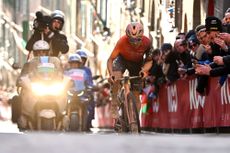 Tom Pidcock 'wouldn’t be surprised' to see attacks before the Poggio at Milan-San Remo
Tom Pidcock 'wouldn’t be surprised' to see attacks before the Poggio at Milan-San RemoBritish rider will lead the line for Ineos Grenadiers alongside Filippo Ganna
By Tom Thewlis Published
-
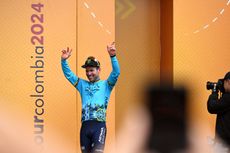 Astana go all in on Cavendish in his final season, but will the confidence pay off?
Astana go all in on Cavendish in his final season, but will the confidence pay off?The Kazakh team have bet big on the 38-year-old sprinter. Both they and Cavendish need 2024 to work
By Adam Becket Published
-
 Mark Cavendish wins his first race in final season after perfect leadout in Tour Colombia
Mark Cavendish wins his first race in final season after perfect leadout in Tour ColombiaThe Briton fended off the challenge of home rider Fernando Gaviria on stage four of the Tour Colombia
By Chris Marshall-Bell Published
-
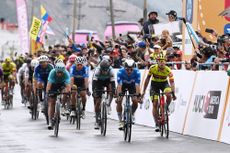 Mark Cavendish forced to settle for third in 2024 season opener in Colombia
Mark Cavendish forced to settle for third in 2024 season opener in ColombiaAstana Qazaqstan rider says Tour Colombia stage one result ‘best debut race for a few years’
By Tom Thewlis Published
-
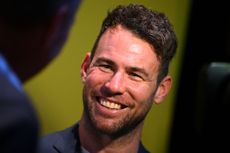 Mark Cavendish seeking aerobic gains at altitude before focusing on high intensity work ahead of new season
Mark Cavendish seeking aerobic gains at altitude before focusing on high intensity work ahead of new seasonAstana head coach Vasilis Anastopoulos: ‘Cavendish is currently doing lots of hours in the saddle and only short sessions of more intensive work’
By Tom Thewlis Published
-
 'This was the day that I realised I'm quite good at racing' - Matej Mohorič remembers the ride that changed him
'This was the day that I realised I'm quite good at racing' - Matej Mohorič remembers the ride that changed himA stage winner in all three Grand Tours, as well as Milan-San Remo, Mohorič reflects back on his 2012 Junior World Championships victory
By Tom Thewlis Published